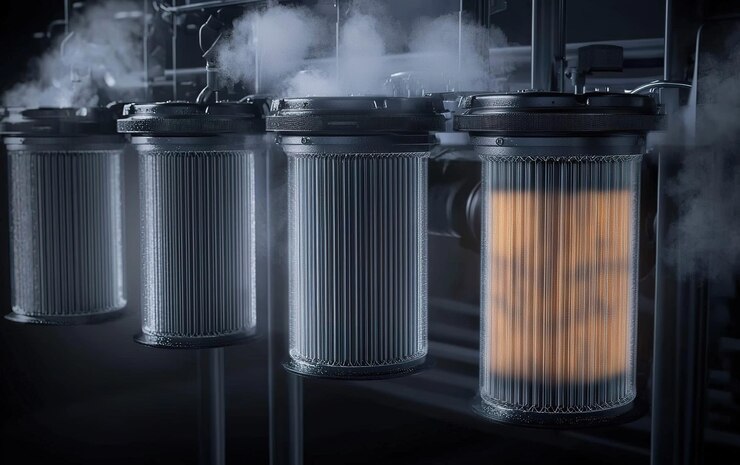
Industrial machinery doesn’t usually break down all at once. It starts small—tiny issues that build up over time. One of the biggest culprits? Contaminated compressed air. It’s sneaky, almost invisible, and it slowly eats away at the health of your equipment. That’s why an air and oil separator isn’t just a “nice to have”—it’s a must if you want your machinery to last.
Let’s break down what makes this component so crucial and how it helps avoid thousands in repair and downtime costs.
The Problem You Can’t Always See
Oil carryover inside compressed air systems doesn’t just disappear. It ends up in valves, lines, actuators, and anywhere else air flows. Even tiny droplets build up over time. The result? More friction, more heat, and faster wear.
Left unchecked, this kind of internal pollution causes premature failure of moving parts. It doesn’t matter how tough the equipment is—if oil contaminates critical spots, parts will seize, degrade, or overheat.
The worst part? You often won’t know there’s a problem until it’s already expensive. By the time components start failing, the damage has already been done.
What the Air and Oil Separator Actually Does
An air and oil separator removes oil from compressed air before it moves downstream into tools or machines. It grabs that fine mist of oil and separates it from the airflow, collecting it so it doesn’t circulate through the system.
It might sound simple, but that small task makes a massive difference. By keeping oil out of the air lines, it protects everything connected to the system.
Think of it like a filter for your bloodstream. Without it, contamination flows freely, reaching every part of your operation.
Reduced Wear Means Longer Machine Life
Every moving part in a system relies on clean, dry air to operate properly. When oil builds up, parts work harder to move. That friction creates more heat, wears down surfaces, and forces compressors to cycle more often.
Replacing worn parts takes time and money—not to mention the disruption it causes. Investing in a solid air and oil separator helps prevent that domino effect from even starting.
And the longer your machinery stays in top shape, the less you’re spending on replacements and emergency fixes. It’s simple math: fewer breakdowns equal more uptime.
Lower Maintenance Costs Over Time
Here’s a quick reality check: maintenance calls aren’t cheap. Every time your system needs to be taken offline for cleaning or repair, production slows or stops. Even if you’ve got in-house technicians, it still pulls time away from higher-value work.
A quality air and oil separator reduces how often maintenance is needed. It keeps components cleaner, which means they don’t require constant attention. Plus, the separator itself is easy to service or replace—much easier than rebuilding a damaged valve or replacing corroded piping.
You’ll also use fewer filters and parts downstream, which cuts supply costs. It’s not just about saving your machines—it saves your wallet, too.
Protects More Than Just Equipment
We often talk about protecting the machinery, but there’s a bigger picture. Contaminated air doesn’t just hurt parts—it can affect the quality of your output, the cleanliness of your facility, and even worker safety.
Oil in the air can settle on products, affecting paint jobs, coatings, and packaging. It can also make work areas slick and pose a risk to staff.
Clean air keeps your operation compliant, efficient, and safe. And again, it all ties back to that one key component quietly doing its job in the background: the air and oil separator.
An Easy Win for Productivity
Here’s the thing: there are plenty of complex ways to boost productivity in a plant. Automation, training, new machinery—all valuable, but all costly and time-consuming.
Switching to or maintaining a high-quality air and oil separator is one of the easiest productivity wins out there. It requires no process change. It doesn’t need extra labor. But the benefits are felt across the board—from fewer breakdowns to better product quality.
Don’t Let the Silent Killer Win
The wear and tear caused by oil contamination doesn’t show up with warning signs. It works quietly behind the scenes, shaving years off your equipment’s life and draining your maintenance budget without much notice.
That’s why the air and oil separator deserves a front-row spot in your maintenance planning. It’s small, it’s affordable, and it has a huge impact. Keeping your compressed air system clean isn’t just smart—it’s essential if you want your machinery to run strong for the long haul.
So don’t wait for something to go wrong. Stay ahead of the game, and let your air system breathe clean. Your machines—and your bottom line—will thank you.






